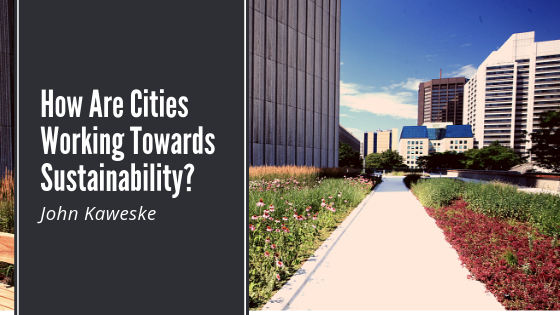As we move into the second month in 2019, more cities are dedicating time and resources to determine the best approach to sustainability. With so much focus being put on the long-term effects of global warming recently, the pressure is on for not only cities and public officials, but companies and Americans to commit to a better, more sustainable lifestyle. With this in mind, how can cities begin to evolve in the coming years towards a way of living that does not adversely affect the planet, and can be sustainable in the future?
Transportation
People all around the world have access to numerous forms of transportation, including flying, driving, or taking a passenger train. Every day, unhealthy toxins and gases are released into the atmosphere, which harms the integrity of our planet. In response, more and more transportation companies have been announcing their long-term sustainability plans. For example, the hugely popular car company, Audi, recently announced that by 2025, one-third of their vehicles would be electric, eliminating the need for gas and reducing toxins from it.
Cities can also work together to reduce the number of consequences that transportation can have on the environment. To begin, cities are beginning to develop cities with a new goal in mind, which is to try and build homes that are within proximity of necessary businesses. This includes grocery stores, pharmacies, hospitals, doctor’s offices, and schools. In doing so, residents may not have to rely on transportation, as they are within walking distance.
Living Spaces
Some of the biggest ways that people around the world use energy is through powering their homes. Examples of energy include gas that is used for stovetops and running water, while electricity lights and heats or cools a home. To alleviate the amount of energy that is used each day, people can implement a few lifestyle changes. To begin, shortening shower times, unplugging unused appliances and turning the air conditioning when out of the house are all examples of ways to reduce energy use in one’s home.
Cities, on the other hand, are using different approaches when developing properties. For example, larger cities like New York City are responding to the need for sustainability by making new property developments smaller, and are designed with sustainability in mind. For example, smaller homes with low ceilings will naturally not need use as much energy for things like lighting and air conditioning, reducing the amount that is used by each household.
While it may not eliminate the problem, it is important for cities and people to actively find ways to use less energy in their daily lives. In doing so, our society can help reduce the number of long-term effects that pollution and global warming can have on the environment.
About The Author
John Kaweske is an Entrepreneur, Consultant, and Biodiesel Expert in Colorado Springs, Colorado. He is the President of Bio Clean Energy, S.A., a biodiesel holding company with diversified assets in the clean energy sector in Sao Paulo, Brazil. In 2018, John and Bio Clean Energy won a $36 million contract with the Bolivian Government, sparking his incredible start in the clean energy sector. Today, John Kaweske continues his work in business, and maintains a monthly meditation blog.

